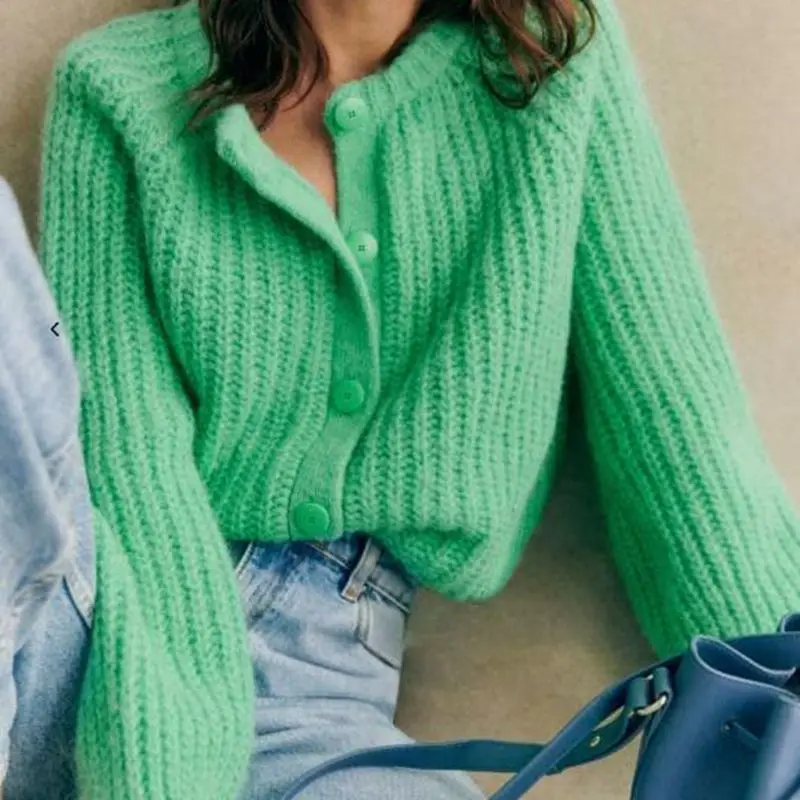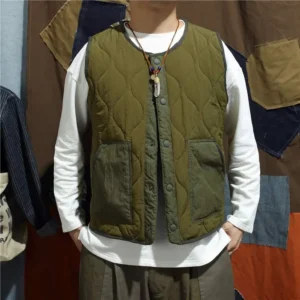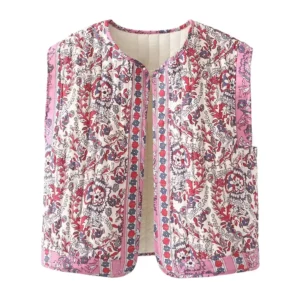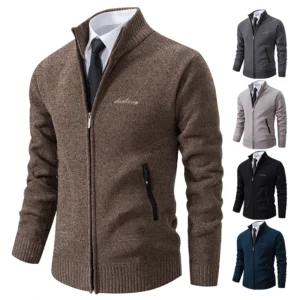Introduction: The Versatility of Cashmere Beyond Winter
Cashmere isn’t just for winter anymore. This premium natural fiber has rightfully earned its place as one of the most versatile materials for year-round wear, especially during those tricky transition months when temperatures fluctuate unpredictably. The challenge of dressing for spring and fall lies in preparing for mornings that start crisp, afternoons that warm up, and evenings that cool down again—often all within the same day.
What makes cashmere uniquely suited for these seasons is its remarkable natural temperature regulation. Unlike synthetic materials or even regular wool, high-quality cashmere adapts to your body’s needs, providing warmth without overheating. This exceptional adaptability is particularly valuable during cashmere for transitional weather when you need pieces that work across varied conditions.
Estate Cloth’s approach to cashmere reflects this versatility. Using only Grade A fibers under 16 microns in thickness, our pieces excel in those challenging transition months where temperatures typically range between 45-65°F (7-18°C). The lightweight nature of premium cashmere makes it ideal for wearing cashmere during unpredictable weather when layering becomes essential but bulk becomes uncomfortable.
In this guide, we’ll explore why cashmere deserves a central role in your transitional wardrobe, how to style it for maximum versatility, and the science behind its exceptional performance during spring and fall.
The Science Behind Cashmere’s Transitional Season Performance
Superior Temperature Regulation
Cashmere’s remarkable insulating properties stem from its unique fiber structure. These hollow fibers trap body heat in microscopic air pockets, creating an insulating layer that keeps you warm in cool weather. What’s truly exceptional is that this same structure allows excess heat and moisture to escape when temperatures rise. This makes cashmere up to eight times warmer than regular sheep’s wool while remaining significantly lighter and less bulky.
Breathability and Moisture Management
Unlike synthetic fabrics that can leave you feeling clammy as temperatures change throughout the day, cashmere efficiently wicks moisture away from your skin. This natural breathability means you stay comfortable whether you’re stepping into a heated building or heading outside into cooler air. The fiber’s ability to absorb moisture (up to 35% of its weight) without feeling wet contributes to its exceptional comfort during fluctuating conditions.
Lightweight Warmth Without Bulk
The exceptional warmth-to-weight ratio of cashmere makes it ideal for transitional seasons. While regular wool fibers typically measure 30+ microns in diameter, premium lightweight cashmere for in-between seasons features fibers under 16 microns. This dramatic difference creates garments that provide substantial warmth with minimal weight and thickness—perfect for layering without the bulkiness that comes with traditional cool-weather clothing.
All-Day Adaptability
The molecular structure of cashmere fiber includes natural crimp that creates elasticity, allowing garments to gently hug the body while moving with you throughout the day. This adaptability, combined with cashmere’s natural temperature regulation, means your outfit remains comfortable from morning commute through evening activities—even as conditions change dramatically throughout the day.
Grade A cashmere, with its longer fibers exceeding 36mm, enhances all these properties while resisting pilling and maintaining its appearance through repeated wearings—making it the ideal choice for transition seasons when your favorite pieces will see frequent use.
Essential Cashmere Pieces for Transitional Weather
Creating a versatile transitional wardrobe starts with selecting the right cashmere pieces. These foundational items will serve as the backbone of your spring and fall outfits:
Lightweight Sweaters
The cornerstone of any transitional cashmere collection is the lightweight sweater. Look for:
– Crewneck styles for versatile layering under jackets or over collared shirts
– V-neck options that work beautifully for layering while creating a flattering neckline
– 2-ply construction that provides warmth without excessive weight
– Semi-fitted silhouettes that allow for comfortable layering
These pieces work equally well on their own during mild days or as part of a layered ensemble when temperatures drop.
Versatile Cardigans
Cardigans represent perhaps the most adaptable cashmere cardigans for transitional seasons, functioning as both mid-layers and light outerwear:
– Longline cardigans that provide additional coverage and styling versatility
– Cropped options that pair beautifully with high-waisted bottoms
– Button-front styles that can be worn closed for warmth or open for a more relaxed look
– Relaxed boyfriend silhouettes that add effortless sophistication to casual outfits
The beauty of the cashmere cardigan lies in its ability to be quickly removed as temperatures rise or added as they fall.
Modern Cashmere T-Shirts and Knit Tops
Lighter than traditional sweaters, cashmere t-shirts and knit tops offer:
– Short-sleeve options for warmer transition days
– Three-quarter sleeves that provide moderate coverage without overheating
– Mock neck or turtleneck styles for additional warmth around the neck
– Slightly looser knit construction for enhanced breathability
These pieces serve as excellent base layers in cooler weather while standing alone beautifully when temperatures climb.
Strategic Accessories
Cashmere accessories provide temperature management with minimal commitment:
– Lightweight scarves that can be added or removed as needed throughout the day
– Elegant wraps that double as light blankets for outdoor gatherings or cool evenings
– Thin beanies or caps for targeted warmth on breezy days
– Fingerless gloves for morning commutes that warm up later
These small additions allow for precise temperature adjustments without changing your entire outfit.
Vests and Sleeveless Options
Core warmth without sleeve coverage makes vests particularly useful during transition seasons:
– Sleeveless pullovers for layering under blazers or jackets
– Button-front vests that add structure to simple shirts
– Longer silhouettes that provide additional coverage
– Relaxed styles that accommodate various layers underneath
The beauty of these pieces lies in keeping your core warm while allowing greater arm mobility and ventilation.
The Art of Layering with Cashmere
Mastering layering techniques transforms your cashmere pieces into truly transitional wardrobe staples. Follow these principles to create adaptable outfits for fluctuating temperatures:
Start with a breathable base layer
Choose natural fabrics like cotton, silk, or linen that sit comfortably against your skin and wick away moisture. Thin cotton t-shirts, silk camisoles, or lightweight button-downs create an excellent foundation under cashmere.Position cashmere as your insulating mid-layer
Layering cashmere in transitional seasons maximizes its insulating properties. The key is choosing the right weight—2-ply cashmere provides warmth without excessive bulk, making it ideal for layering between other garments.Select appropriate outer layers
Lightweight jackets, unlined blazers, or thin trench coats complement cashmere beautifully. These pieces should be slightly roomier to accommodate layers without restriction while maintaining a streamlined silhouette.Consider strategic venting options
Choose outer layers with adjustable features—front openings, roll-up sleeves, or vented backs—that allow you to regulate temperature throughout the day without removing entire pieces.Master the “shoulder drape” technique
During particularly variable days, carry a lightweight cashmere cardigan or wrap draped over your shoulders. This European-inspired styling approach keeps an extra layer accessible without committing to wearing it fully.Plan your day-to-evening transition
Begin with more layers in the cooler morning, removing them as the day warms up. Bring a cashmere accessory like a scarf or wrap to add warmth as temperatures drop again in the evening.
The brilliance of cashmere in transitional weather lies in its ability to function at multiple levels in your layering system while maintaining a refined appearance, unlike bulkier technical materials.
Spring Cashmere: Outfit Formulas and Styling Ideas
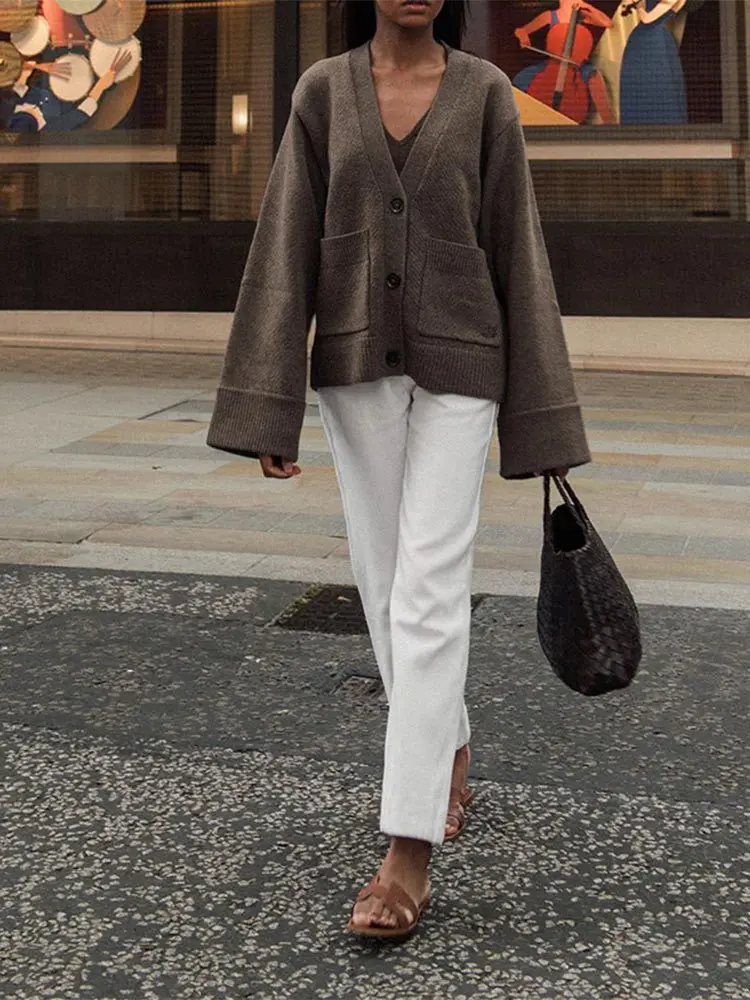
Spring’s warming temperatures paired with lingering coolness create the perfect environment for lightweight cashmere. These outfit formulas leverage cashmere’s versatility for the season:
Casual Daytime Looks
Lightweight cashmere crewneck + white jeans + ballet flats
Perfect for weekend brunches or casual outings when paired with simple gold accessoriesCashmere t-shirt + floral midi skirt + leather jacket + white sneakers
Balances feminine and casual elements for an effortless daytime lookCropped cashmere cardigan + high-waisted linen pants + espadrilles
Creates a relaxed silhouette while providing warmth for cooler spring mornings
Office-Appropriate Ensembles
Cashmere shell + tailored blazer + straight-leg trousers + loafers
Offers a polished, layered approach that adapts to temperature-controlled environmentsLightweight cashmere turtleneck + pencil skirt + pumps
Provides a sophisticated silhouette with the comfort of natural fibersWomen’s cashmere cardigans + silk blouse + wide-leg pants + pointed flats
Creates an elegant layered look that transitions beautifully from office to evening
Weekend and Leisure Combinations
Cashmere hoodie + straight-leg jeans + canvas sneakers
Elevates casual weekend wear while providing comfort for variable temperaturesOversized cashmere sweater + leggings + ankle boots
Offers cozy comfort with enough style for casual social gatheringsCashmere wrap + simple t-shirt + relaxed chinos + sandals
Creates a flexible layered look for outdoor activities with varying exposure
Spring cashmere color palettes work best in lighter neutrals (oatmeal, soft gray, pale blue) and gentle pastels that reflect the season’s awakening energy while providing versatile pairing options.
Fall Cashmere: Outfit Formulas and Styling Ideas
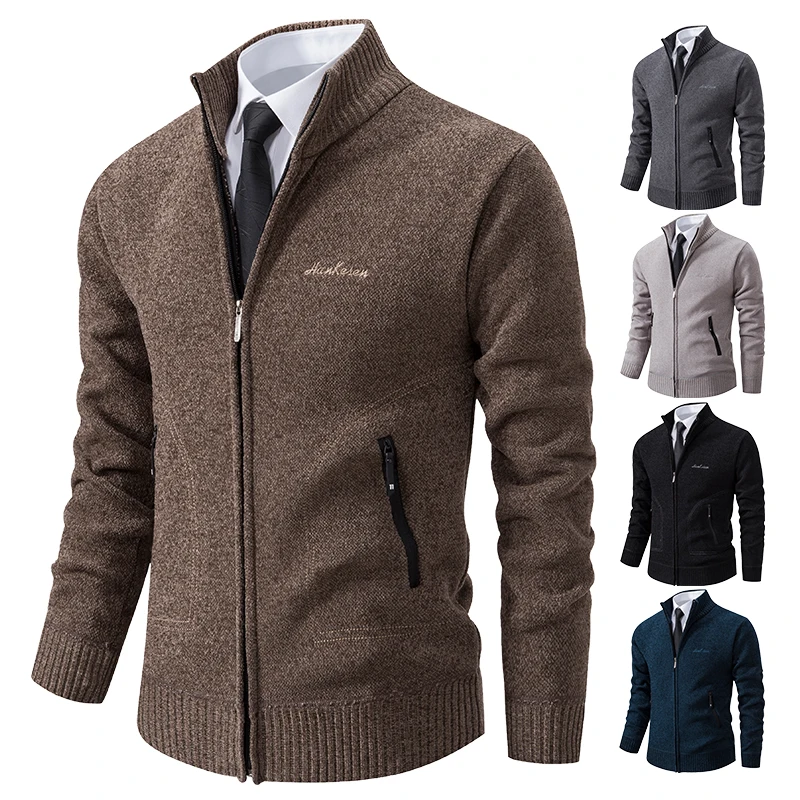
Fall’s cooling temperatures make cashmere an essential wardrobe component. These outfit combinations maximize comfort while embracing the season’s aesthetic:
Everyday Sophistication
Cashmere turtleneck + dark wash jeans + leather ankle boots
Creates a classic fall silhouette with exceptional comfort and warmthCashmere pullover + corduroy pants + suede chelsea boots
Combines complementary textures for rich visual interest and practical warmthCashmere henley + utility jacket + chinos + desert boots
Delivers a rugged yet refined aesthetic perfect for weekend activities
Workplace Polish
Men’s cashmere cardigans + oxford shirt + wool trousers + leather loafers
Provides sophisticated layering that adapts to office temperature fluctuationsCashmere blazer + silk shell + tailored pants + block heel pumps
Offers a modern take on workwear with comfortable insulationCashmere crewneck + button-down + pencil skirt + knee-high boots
Creates a timeless professional look with strategic warmth coverage
Weekend Adventures
Cashmere half-zip + plaid flannel shirt + jeans + hiking boots
Perfect for outdoor excursions with temperature regulation for varied activity levelsCashmere poncho + slim-fit jeans + ankle boots + leather crossbody
Delivers effortless style for farmers’ markets or casual gatheringsCashmere hoodie + technical vest + performance pants + trail sneakers
Combines luxury with functionality for active outdoor pursuits
Fall cashmere color palettes excel in rich earthy tones (burgundy, forest green, camel) and deep neutrals (charcoal, navy, chocolate brown) that complement the season’s natural environment while coordinating beautifully with other fall textiles.
Creating Texture and Dimension: Complementary Fabrics for Cashmere
Cashmere’s luxurious softness creates an excellent foundation for textural contrast with other fabrics. These combinations enhance both visual interest and functional performance:
Linen and Cotton Pairings
These plant-based fibers complement cashmere by adding breathability and structural contrast:
– Crisp cotton button-downs under lightweight cashmere sweaters create classic layering
– Rumpled linen pants balance the refined softness of cashmere tops
– Cotton t-shirts as base layers under cashmere cardigans offer breathable foundations
Silk and Satin Combinations
These smooth, lustrous fabrics create elegant juxtapositions with cashmere’s soft matte finish:
– Silk blouses under cashmere cardigans for office-appropriate luxury
– Satin skirts with cashmere sweaters for evening elegance
– Silk scarves with cashmere coats for added neck protection and visual interest
Denim as a Cashmere Companion
The sturdy, casual nature of denim creates perfect balance with cashmere’s refinement:
– Dark wash jeans with cashmere sweaters for elevated weekend wear
– Denim jackets over cashmere dresses for transitional layering
– Chambray shirts under cashmere vests for textural dimension
Leather and Suede Accents
These materials add structure and weather resistance to softer cashmere pieces:
– Leather jackets over cashmere pullovers for edge and protection
– Suede boots with cashmere dresses for seasonal balance
– Leather accessories that complement cashmere’s luxury aesthetic
The key to successful texture mixing lies in balancing weights and visual densities. When creating year-round cashmere outfits, pair heavier textures with lighter cashmere knits and vice versa to maintain visual harmony while maximizing comfort during temperature fluctuations.
Transitional Color Theory: Seasonal Palettes for Cashmere
Strategic color selection enhances the versatility of your cashmere collection across transitional seasons:
Year-Round Neutrals
These timeless colors form the backbone of a transitional wardrobe:
– Ivory and oatmeal (softer alternatives to stark white)
– Camel and beige (warm neutrals that complement most color palettes)
– Gray in various shades (from light heather to deep charcoal)
– Navy blue (more versatile than black for transitional seasons)
Spring Palette Adaptations
Lighter tones that reflect the season’s renewed energy:
– Soft pastels (lavender, mint, baby blue) that pair beautifully with neutrals
– Blush pink and peach tones that add warmth without heaviness
– Light, clear blues that echo spring skies
– Gentle yellows that introduce subtle brightness
Fall Palette Transitions
Richer hues that harmonize with autumn’s natural landscape:
– Burnt orange and amber that reflect changing leaves
– Olive and forest greens that provide sophisticated depth
– Burgundy and wine tones that add rich color without heaviness
– Terracotta and rust that bridge summer brightness with winter depth
The beauty of cashmere sweaters lies in how they absorb and reflect color. The fiber’s natural properties give colors a depth and luminosity that’s difficult to achieve with other materials, making even simple hues appear rich and nuanced.
For maximum versatility, consider building your collection around neutrals first, then adding seasonal colors that complement your skin tone and existing wardrobe. This approach ensures your cashmere pieces work harmoniously together while adapting to seasonal shifts.
Building a Capsule Wardrobe with Transitional Cashmere
Creating a thoughtful cashmere capsule wardrobe maximizes versatility while minimizing unnecessary consumption. Focus on these foundational pieces:
- Lightweight crewneck sweater – The ultimate versatile piece that works alone or layered
- V-neck pullover – Perfect for showcasing layers underneath
- Button-front cardigan – Functions as both sweater and light jacket
- Cashmere t-shirt or shell – Essential for warmer transition days
- Cashmere scarf or wrap – Adds warmth and style as needed
- Cashmere vest – Provides core warmth without sleeve bulk
- Turtleneck sweater – Offers neck protection for cooler days
The beauty of this approach lies in the mathematics of outfit creation. With just these seven core pieces in complementary colors, you can create dozens of unique combinations suitable for various temperatures and occasions.
Versatile cashmere pieces for all seasons deliver exceptional value when considering cost-per-wear. A premium cashmere sweater might cost $200-300, but when worn weekly throughout spring and fall (approximately 30 weeks) over several years, the cost-per-wear drops dramatically—often below that of lower-quality seasonal items.
Beyond economics, this approach supports sustainability by focusing on fewer, better things. Quality cashmere, properly cared for, can last decades—making it an environmentally responsible choice compared to seasonal fast fashion that quickly wears out and is discarded.
Expert Care Guide: Maintaining Your Transitional Cashmere

Proper maintenance ensures your cashmere remains beautiful throughout transitional seasons and beyond:
Gentle Washing Techniques
- Hand wash using lukewarm water and specialist cashmere shampoo or gentle baby shampoo
- Soak for 5-10 minutes without rubbing or wringing
- Rinse thoroughly with clean water at the same temperature
- Press gently between towels to remove excess moisture without stretching
Drying and Reshaping
- Lay flat to dry on a clean towel away from direct heat and sunlight
- Reshape while damp, gently stretching to original dimensions
- Never hang wet cashmere as it will stretch out of shape
- Allow 24-48 hours for complete drying before storing or wearing
Between-Season Storage
- Clean thoroughly before storing to prevent moth damage
- Store folded (never hanging) in breathable cotton storage bags
- Use cedar blocks or lavender sachets as natural moth deterrents
- Store in a cool, dry place away from direct sunlight
Pilling Management
- Use a specialized cashmere comb or de-pilling tool for gentle removal
- Address pills promptly but gently to prevent fiber damage
- Understand that some initial pilling is normal with even the finest cashmere
- Regular removal prevents pills from becoming more noticeable
High-quality cashmere requires special attention but rewards your care with exceptional longevity. For pieces that see frequent wear during adapting cashmere layers for temperature shifts, establish a regular maintenance routine rather than waiting for visible soiling or damage.
Cashmere Wrap Sweaters, Women's Cashmere Pullovers
$75.89 Select options This product has multiple variants. The options may be chosen on the product pageCashmere Cable Knit Sweaters, Women's Cashmere Pullovers
Price range: $111.82 through $112.93 Select options This product has multiple variants. The options may be chosen on the product page- Price range: $171.47 through $181.33 Select options This product has multiple variants. The options may be chosen on the product page
Cropped Cashmere Sweaters, Women's Cashmere Pullovers
$155.77 Select options This product has multiple variants. The options may be chosen on the product page- Price range: $87.29 through $91.47 Select options This product has multiple variants. The options may be chosen on the product page
- Price range: $102.02 through $109.37 Select options This product has multiple variants. The options may be chosen on the product page
Beyond the Basics: Innovative Ways to Style Cashmere
Once you’ve mastered fundamental cashmere styling, explore these creative approaches to maximize versatility:
- The strategic half-tuck – Partially tucking the front of a cashmere sweater creates waist definition while maintaining a relaxed look
- The sweater-as-scarf technique – Draping sleeves of a lightweight cashmere sweater around your neck like a scarf, with the body hanging down your back
- Belting oversized pieces – Adding a slim belt over a longer cashmere cardigan transforms its silhouette into a more structured piece
- The unexpected layer – Wearing a fitted cashmere turtleneck under a summer dress extends its wearability into cooler seasons
- The shoulder-robing technique – Wearing a cashmere vest draped over shoulders without putting arms through sleeves creates a sophisticated, editorial look
- The sleeve roll – Pushing up sleeves on a cashmere pullover creates a more casual feel while regulating temperature
These techniques allow you to transform basic cashmere pieces into various looks, effectively expanding your wardrobe without additional purchases. Experimenting with these styling approaches keeps your transitional outfits fresh and adaptable to various occasions.
Is Cashmere Worth the Investment for Transitional Seasons?
When evaluating cashmere as a transitional season investment, consider these factors:
Cost-Per-Wear Analysis
High-quality cashmere, though initially expensive, delivers exceptional value when worn across multiple seasons. A premium cashmere sweater worn twice weekly throughout both spring and fall for three years yields over 200 wears—bringing the cost-per-wear to just a dollar or two per use.
Multi-Season Functionality
Unlike season-specific fabrics (heavy wools, lightweight linens), quality cashmere functions beautifully across temperature ranges. This versatility eliminates the need for separate wardrobes for each seasonal transition, reducing overall clothing expenditure.
Quality Indicators for Transitional Performance
For optimal transitional season wear, look for:
– Grade A cashmere with fibers under 16 microns
– Fiber length exceeding 36mm for durability and reduced pilling
– 2-ply construction for balanced weight
– Tight, consistent knitting that maintains shape through temperature changes
While the initial investment in quality cashmere is significant, its exceptional longevity, versatility, and comfort make it particularly valuable for transition seasons when clothing needs to perform across variable conditions.
Can Cashmere Be Both Sustainable and Luxurious?
The sustainability profile of cashmere is nuanced, but high-quality pieces offer several environmental benefits:
Longevity as Environmental Benefit
Quality cashmere garments often last decades when properly maintained, significantly reducing the environmental impact compared to disposable fashion that might be replaced seasonally. This longevity means fewer resources consumed and less waste generated over time.
Natural Fiber Advantages
As a natural, biodegradable fiber, cashmere doesn’t release microplastics during washing or decomposition. At the end of its useful life, cashmere returns to the earth without persistent environmental impact, unlike synthetic alternatives.
Versatility Reducing Consumption
The adaptability of cashmere across seasons means fewer separate garments needed for transitional periods. This versatility naturally reduces overall consumption and the environmental footprint of your wardrobe.
Responsible Production Practices
Premium cashmere producers increasingly emphasize sustainable herding practices, animal welfare, and responsible manufacturing processes. Estate Cloth’s commitment to exceptional quality naturally aligns with sustainability by creating pieces intended for extended use rather than quick replacement.
The most sustainable approach to cashmere involves buying fewer, better pieces that will serve you beautifully for many years rather than accumulating lower-quality items that require frequent replacement.
The Timeless Appeal of Transitional Cashmere
As we’ve explored throughout this guide, cashmere’s unique properties make it exceptionally well-suited for navigating the unpredictable temperatures of spring and fall. Its natural temperature regulation, breathable comfort, and versatile styling potential create a foundation for transitional dressing that few other materials can match.
The ability to layer cashmere thoughtfully—from lightweight t-shirts to mid-weight pullovers to elegant accessories—provides adaptability through fluctuating conditions without sacrificing sophistication or comfort. This versatility across both spring and fall maximizes the value of each carefully chosen piece.
What truly distinguishes premium cashmere for transitional seasons is its remarkable combination of practical performance and luxurious experience. The exceptional softness against the skin, the elegant drape of well-crafted garments, and the subtle luster that enhances every color together create an everyday luxury that elevates your entire wardrobe.
By investing in quality cashmere pieces and caring for them properly, you create a transitional wardrobe foundation that will serve you beautifully for years to come—adapting to changing weather, evolving styles, and life’s many transitions with timeless grace.

